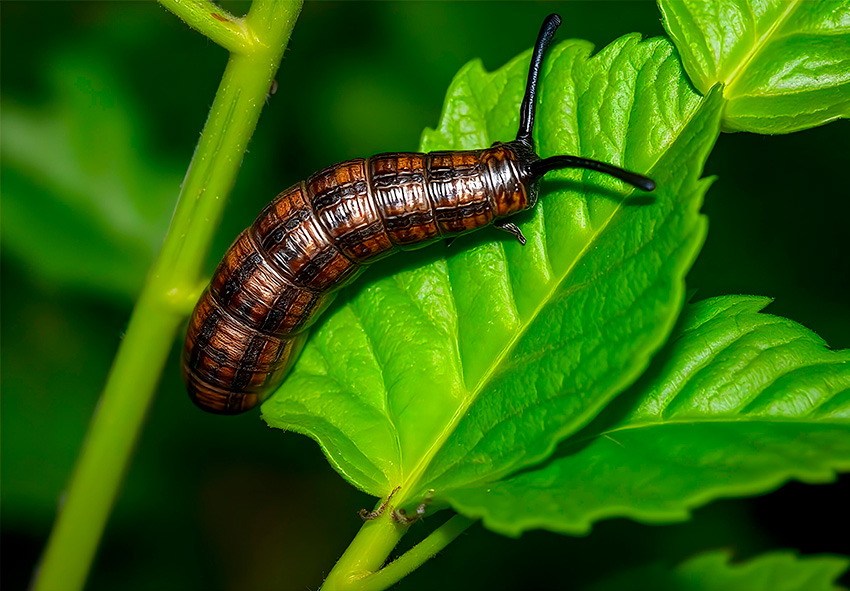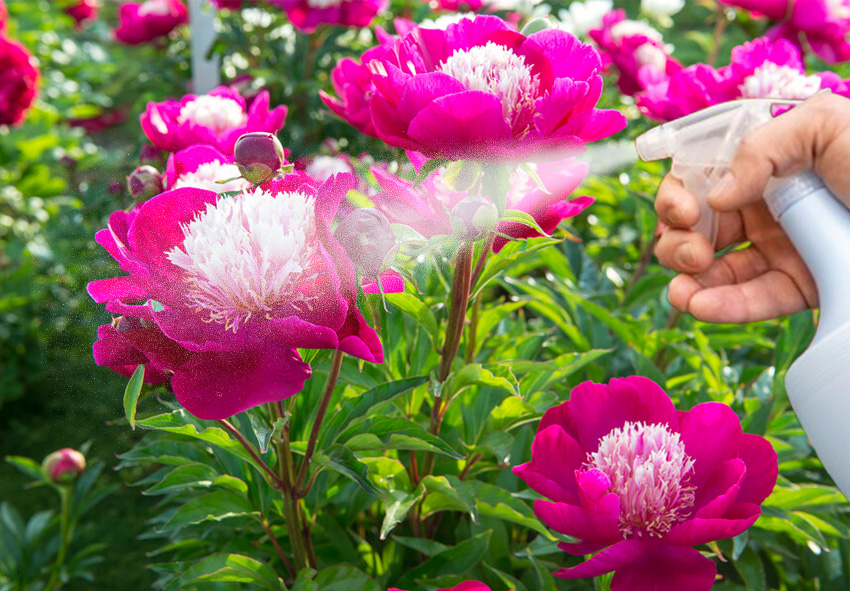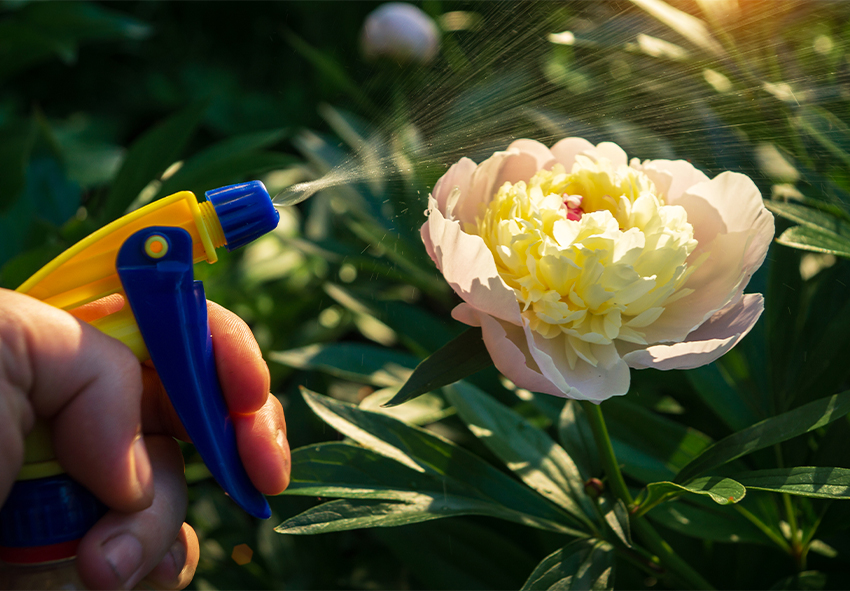Peonies are beloved for their lush blooms, vibrant colors, and long-lasting charm in garden landscapes. However, like many perennials, they are not immune to pests and diseases. Learning how to spot problems early and treat them effectively is key to keeping your peonies healthy and beautiful all season long.
This guide will walk you through the most common peony pests and diseases, offer both organic and chemical treatment options, and provide actionable tips to prevent issues before they start. Our gardening blog is a perfect place to find all the information you need!
Common Pests That Affect Peonies

Peonies are relatively low-maintenance, but several common garden pests can affect their health and bloom quality. Early identification and management of these pests are essential for vibrant and thriving peony plants. Common peony pests include:
- Thrips: Thrips are tiny insects that feed on peony buds and petals, often causing distortion or discoloration. You may notice streaks or brown edges on petals before they fully open. Insecticidal soap or neem oil can help control thrips when applied early in the season.
- Ants and Aphids: Ants are often seen crawling on peony buds, attracted by the sweet nectar, but they don’t usually harm the plant. However, their presence may signal aphids, which feed on the buds and leaves. A strong spray of water or insecticidal soap helps remove aphids and prevents further damage.
- Japanese Beetles: These shiny, metallic pests chew through peony foliage and can quickly defoliate the plant. Handpicking in the early morning and using traps placed away from the garden can reduce their numbers. Neem oil or beetle-specific pesticides may be used for severe infestations.
- Slugs and Snails: Moist conditions attract slugs and snails, which can chew holes in young leaves. To deter them, use barriers like crushed eggshells or diatomaceous earth around your plants. Traps and slug pellets are additional control methods for persistent problems.
Common Peony Diseases and How to Treat Them
Diseases in peonies are often fungal in nature and can spread quickly if not addressed. Knowing the symptoms and applying treatments early can save your plants from serious damage.
Botrytis Blight (Gray Mold)
This is one of the most common peony diseases, especially in wet or humid conditions. You’ll notice gray mold on buds or stems, causing them to turn black and collapse. Prune affected areas immediately and dispose of them — don’t compost infected plant parts.
Powdery Mildew
Powdery mildew appears as a white, powdery coating on leaves, reducing photosynthesis and plant vigor. Increase air circulation and avoid overhead watering to prevent it. Organic fungicides like sulfur sprays can help control outbreaks.
Leaf Spot (Cladosporium)
Brown or purple spots on peony leaves often indicate a leaf spot infection. The disease usually appears late in the growing season. Remove and destroy infected leaves, and apply a fungicide if the problem recurs annually.
Peony Wilt
Also known as Phytophthora blight, this disease causes entire stems to wilt and collapse suddenly. Good drainage and soil aeration are key to preventing wilt. Infected plants should be removed entirely to stop the disease from spreading.
Preventing Pests and Diseases on Peonies

The best defense is a proactive approach. Healthy, well-spaced peonies in the right environment are far less likely to suffer from pests or fungal diseases.
Proper Spacing and Air Circulation
Crowded peonies trap moisture and limit airflow, creating the perfect environment for fungal infections. Space plants at least 3 feet apart and prune back nearby foliage. This also makes it easier to inspect plants regularly.
Watering Practices
Water peonies at the base rather than overhead to reduce leaf wetness. Water early in the day to allow any moisture on leaves to dry before evening. Overwatering can lead to root rot and other fungal issues.
Seasonal Clean-Up
Fallen leaves and plant debris can harbor pests and fungal spores over winter. Cut back dead foliage in fall and remove any debris from around the plant base. Disinfect pruning tools to avoid spreading disease.
Soil Health and Drainage
Peonies thrive in well-drained, nutrient-rich soil. If your soil retains water, consider adding compost or sand to improve texture. Avoid planting peonies in the same spot if disease has occurred before.
Organic and Chemical Treatments
When prevention isn’t enough, targeted treatments can save your peonies and restore their health.
Natural Remedies for Pest Control
When it comes to maintaining healthy peonies, natural pest control methods are an eco-friendly and effective solution. These remedies help keep unwanted insects at bay without harming beneficial pollinators or the surrounding environment. Below are some proven natural treatments that are safe and simple to use in your garden:
- Neem Oil Spray: Acts as a natural insect repellent and disrupts pest feeding cycles. It’s effective against aphids, thrips, and beetles without harming beneficial insects when applied correctly.
- Insecticidal Soap: This gentle solution kills soft-bodied pests like aphids and mites on contact. Use it in the early morning or evening to avoid leaf burn from the sun.
- Garlic and Chili Spray: A homemade deterrent that repels pests with its strong scent and taste. Blend garlic, chili, and water, then strain and spray around your plants.
- Diatomaceous Earth: A fine powder made from fossilized algae that damages the exoskeletons of crawling insects like slugs and beetles. Sprinkle it at the base of your plants after watering.
- Essential Oil Blends: Peppermint, rosemary, or eucalyptus oils mixed with water create a natural repellent. Spray around foliage to discourage pests like ants and aphids.
- Beneficial Insects: Introduce ladybugs or lacewings to your garden to naturally control aphid populations. These insects help maintain ecological balance while protecting your plants.
Chemical Solutions for Severe Infestations
For more aggressive pest or disease outbreaks, chemical treatments may be necessary. Use fungicides or pesticides labeled for peonies and always follow the manufacturer’s directions. Avoid spraying during bloom to protect pollinators like bees.
Monitoring and Long-Term Care Tips

Regular monitoring and thoughtful care throughout the year will keep your peonies healthy and pest-free for seasons to come. Here are some tips for you:
Regular Inspection
Check your peonies weekly for early signs of damage or disease. Look closely at buds, stems, and the underside of leaves. Early detection means faster and more effective treatment. You can find even more useful caring tips in our full guide for peonies.
Companion Planting for Peony Protection
Companion planting is a natural and effective way to support the health of your peonies by deterring pests, improving soil conditions, and enhancing overall garden resilience. The right companion plants can create a more balanced ecosystem around your peonies, reducing the need for chemical interventions. Below are some excellent choices to plant alongside peonies for added protection and beauty:
- Garlic: Known for its strong scent, garlic helps repel aphids, Japanese beetles, and fungal diseases that can affect peonies.
- Marigolds: These vibrant flowers release compounds that deter nematodes and aphids. They also attract beneficial insects that prey on common peony pests.
- Catmint (Nepeta): A great ground cover that repels aphids and other soft-bodied insects. Its fragrance can mask the scent of peonies, making them less attractive to pests.
- Lavender: Its strong aroma naturally repels insects like moths and beetles. Lavender also attracts pollinators, which can improve the overall health of your garden.
- Chives: A member of the allium family, chives emit a sulfur-like scent that deters aphids and mites, common issues for peonies.
- Alliums (like ornamental onions): Their pest-repelling properties help protect peonies from borers and aphids. Alliums also offer a lovely contrast in flower beds.
- Yarrow: This hardy perennial attracts ladybugs and lacewings, natural predators of aphids and thrips, providing indirect protection to peonies.
Boosting Plant Immunity
Healthy plants resist pests and diseases better. Fertilize in early spring with a balanced slow-release formula. Adding compost improves soil structure and supports root development.
Conclusion
Peonies are stunning garden staples, but they require attention to stay healthy and bloom beautifully year after year. With proper pest control and disease prevention strategies, you can enjoy their full potential. Stay vigilant, care for your soil, and act quickly at the first signs of trouble to ensure a thriving peony display!
Frequently Asked Questions (FAQs) about Peony Pests and Diseases
1. What are the most common pests affecting peonies?
The most common pests include aphids, thrips, and scale insects. These pests can cause curling leaves, sticky residue, or stunted growth. Regular inspection and introducing beneficial insects can help manage infestations naturally.
2. How do I identify peony botrytis blight?
Botrytis blight appears as gray mold on buds, stems, or leaves. It often causes buds to turn brown and fail to open. Remove infected parts promptly and avoid overhead watering to reduce moisture buildup.
3. How can I prevent peony diseases naturally?
Ensure good air circulation, avoid overcrowding, and water at the base of plants. Mulching with clean organic material also helps reduce fungal spread. Rotate plant locations every few years to minimize soil-borne diseases.
4. Can peony bulbs be ordered from your online store?
Our online store Dutch-bulbs.com offers a wide selection of peony bulbs in various colors, making it easy for you to add these beauties to your garden. We source our bulbs from reputable growers to ensure you receive high-quality specimens.
5. What companion plants help protect peonies from pests?
Garlic, chives, marigolds, and lavender are great companions. These plants repel pests and attract beneficial insects. They also enhance the garden’s biodiversity, creating a healthier ecosystem around your peonies.
Published: 29.08.2025
